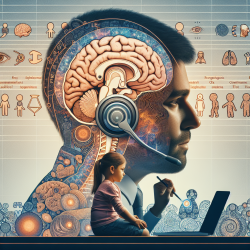Introduction
In the realm of speech-language pathology, understanding the evolution of language is crucial for developing effective therapeutic strategies. The research paper titled A Proposed Neurological Interpretation of Language Evolution by Alfredo Ardila provides a comprehensive insight into how language has evolved over time, focusing on the neurological aspects. This blog aims to explore how practitioners can enhance their skills by integrating these findings into their practice, ultimately improving outcomes for children.
Understanding the Dual Language Systems
The research highlights two major aphasic syndromes: Wernicke's-type and Broca's-type aphasia. These syndromes are associated with disturbances at different linguistic levels—lexical/semantic and grammatical, respectively. Understanding these distinctions can help practitioners tailor their interventions more effectively.
- Wernicke's-type Aphasia: Involves issues with word selection and comprehension, linked to the temporal lobe.
- Broca's-type Aphasia: Affects grammar and speech production, associated with the frontal lobe.
Implications for Speech Therapy
Recognizing these two distinct language systems allows therapists to develop more targeted interventions. For example, children exhibiting symptoms of Wernicke's-type aphasia might benefit from activities that enhance vocabulary and comprehension. Conversely, those with Broca's-type symptoms may require exercises focusing on grammar and sentence structure.
Practitioners can implement strategies such as:
- Lexical Enhancement: Using picture cards and storytelling to build vocabulary.
- Grammatical Structuring: Engaging in sentence-building games to improve syntax.
Encouraging Further Research
The paper suggests that grammar likely originated from the internal representation of actions, which is a key area for further exploration. Practitioners are encouraged to delve deeper into how action representation and grammar are intertwined, potentially unlocking new therapeutic techniques.
Additionally, understanding the role of the FOXP2 gene and mirror neurons in language evolution could offer new insights into speech therapy. These elements highlight the genetic and neural underpinnings of language, paving the way for innovative approaches in therapy.
Conclusion
By integrating the findings from this research into their practice, speech-language pathologists can enhance their understanding of language disorders and improve therapeutic outcomes. As we continue to unravel the complexities of language evolution, ongoing research and application of these insights will be crucial.
To read the original research paper, please follow this link: A Proposed Neurological Interpretation of Language Evolution.










